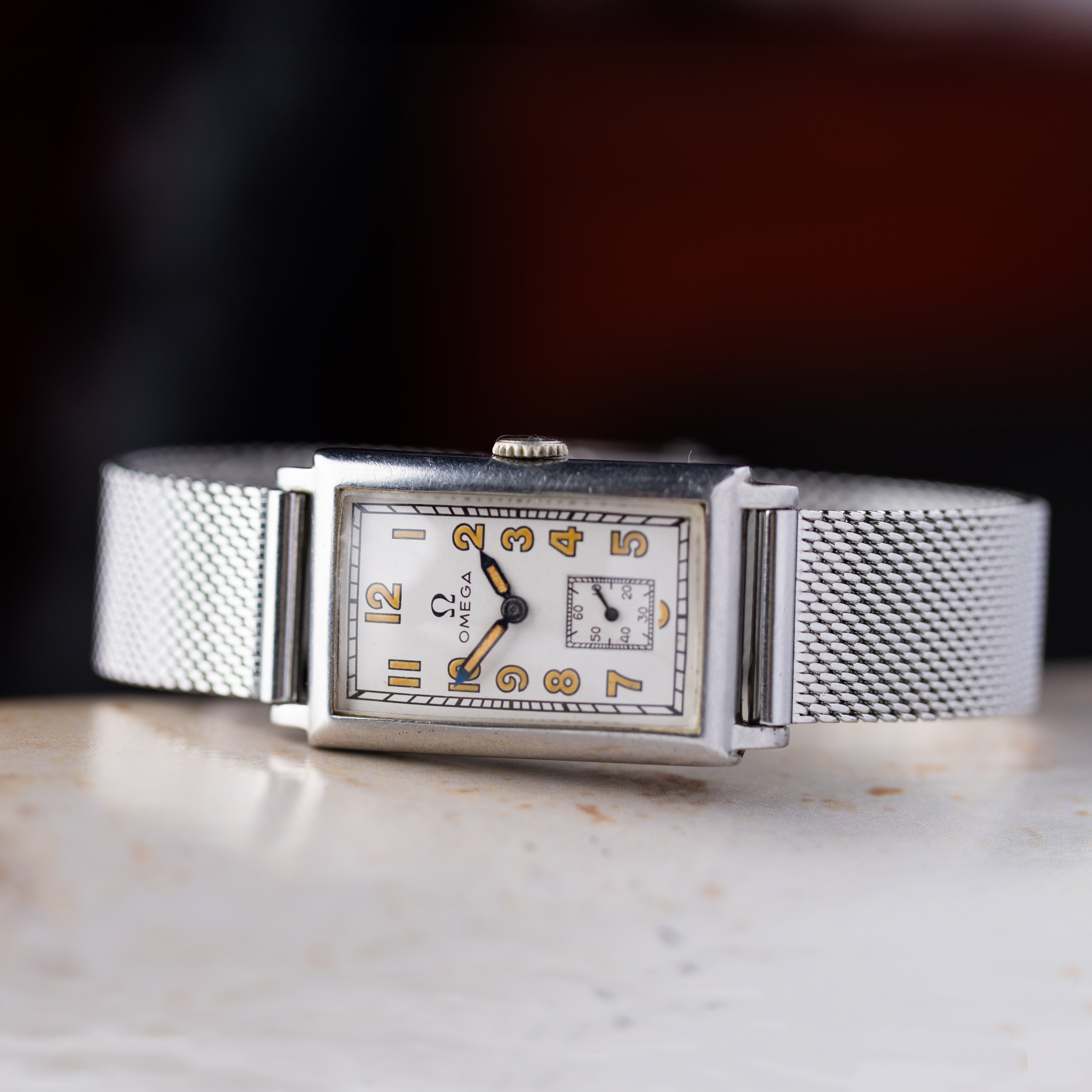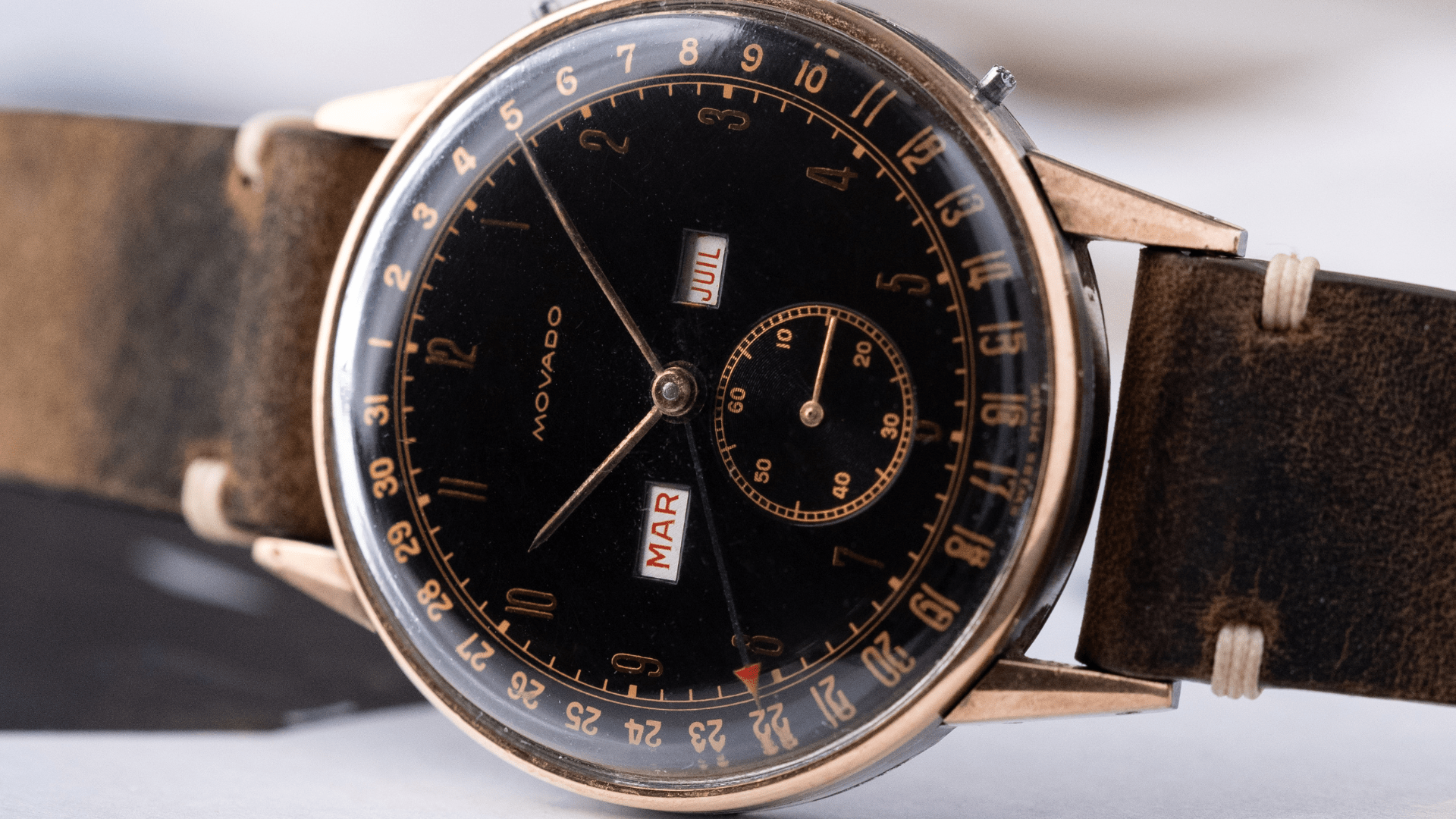Dress watches have always represented the pinnacle of refinement in watchmaking. From the understated elegance of the 1930s to the bold experiments of the 1970s, these timepieces evolved alongside cultural, technological, and aesthetic shifts. Let’s explore the design transformations across the decades.
1930s: Understated Beginnings
The 1930s marked the rise of wristwatches as pocket watches fell out of fashion. Dress watches from this era prioritized simplicity and formality.
- Case Size: Typically 30–32mm, compact by today’s standards.
- Dial Design: Minimalist layouts, with slim printed numerals or indices. Sub-seconds dials at 6 o’clock were common.
- Materials: Gold-plated or solid gold cases exuded luxury, while leather straps completed the formal look.
- Iconic Example: The Longines Calatrava-style watches, which embodied Art Deco influences.

1940s: Functionality in Design
During World War II, practicality shaped the design of dress watches. Although utilitarian influences were prominent, these timepieces retained a touch of elegance for formal occasions.
- Case Size and Material: Stainless steel cases became more common due to wartime resource constraints, averaging 33mm in size.
- Dial Features: Clear, functional layouts often included Arabic numerals or a mix of Arabic and baton markers for easy readability. Small seconds dials remained a staple.
- Straps: Leather straps were standard, offering durability and comfort.
- Notable Models: Movado and Omega produced timeless pieces that balanced functionality with style.

1950s: The Return to Elegance
The post-war era ushered in prosperity and a renewed focus on sophistication in dress watches.
- Larger Case Sizes: Watches grew slightly larger, with 35mm cases becoming popular. This reflected the shift toward bolder, more prominent wristwear.
- Minimalist Dials: Designs leaned toward simplicity, with slim baton or dagger-style markers, often applied rather than printed.
- Gold Dominance: Gold cases symbolized post-war luxury, paired with sleek leather straps.
- Technological Innovation: The introduction of automatic movements allowed for slimmer profiles, seen in models like Piaget’s ultra-thin calibers.
- Cultural Shift: Dress watches became status symbols, worn to signify success and refinement.

1960s: Modernist Simplicity
By the 1960s, modernist principles began shaping watch design, emphasizing clean lines and practicality.
- Case Shapes: While round cases remained dominant, cushion and rectangular cases gained popularity for their geometric appeal.
- Slim Profiles: Advances in movement technology allowed for even thinner cases, reinforcing their suitability as elegant, unobtrusive accessories.
- Dial Design: Baton markers, simple typography, and monochromatic color schemes reflected the minimalist aesthetic.
- Materials: Stainless steel gained traction alongside gold, providing versatility for both formal and casual wear.
- Examples: Models like the Omega Constellation exemplified the era’s focus on precision and style.

1970s: Bold Innovations
The 1970s saw a departure from strict formality, with dress watches embracing experimental designs and bold statements.
- Larger Cases: Watches reached 36mm and above, reflecting a growing preference for larger, more noticeable pieces.
- Color and Texture: Dials introduced vivid colors, textured patterns, and asymmetrical layouts, departing from prior decades’ restraint.
- Quartz Revolution: The rise of quartz movements allowed for greater affordability and accuracy, influencing even high-end dress watches.
- Notable Models: The Rolex Oysterquartz and Seiko Quartz Astron redefined dress watches with cutting-edge technology.
Themes in Design: Numerals, Size, and Layout
Throughout these decades, key elements like numerals and layout evolved with changing tastes:
- 1940s–50s: Arabic numerals and small seconds were common for clarity and elegance.
- 1950s–60s: Minimalist baton or dagger-style markers became the norm.
- Case Sizes: Watches steadily increased from 30mm in the 1930s to over 36mm by the 1970s, reflecting shifts in fashion and practicality.
Why Vintage Dress Watches Endure
The evolution of dress watches tells a story of adaptability and timelessness. Whether it’s the wartime functionality of the 1940s or the modernist elegance of the 1960s, these watches remain relevant today. Their versatility allows them to transition seamlessly from formal to casual settings, making them a staple in any collection.
Discover Your Piece of History
At Dumarko, we offer a curated collection of vintage dress watches that showcase the best of each era. From minimalist designs to bold 1970s innovations, you’re sure to find a timepiece that speaks to your style. Explore our collection today at www.dumarko.com.


